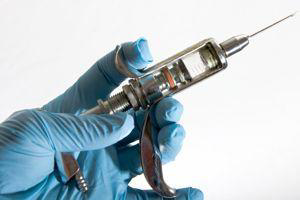FDA takes vital steps to address antimicrobial resistance

The FDA have implemented a plan to help phase out the use of medically important antimicrobials in food animals, such as to enhance growth or to improve feed efficiency. The FDA have implemented the plan to ensure judicious use of antibiotics in the animals.
Certain antimicrobials have historically been used in the feed or drinking water of cattle, poultry, pigs, and other food animals for production purposes such as using less food to gain weight. Some of these antimicrobials are important drugs used to treat human infection, prompting concerns about the contribution of this practice to increasing the ability of bacteria and other microbes to resist the effects of a drug. Once antimicrobial resistance occurs, a drug may no longer be as effective in treating various illnesses or infections.
Because antimicrobial drug use in both humans and animals can contribute to the development of antimicrobial resistance, it is important to use these drugs only when medically necessary. The plan announced today focuses on those antimicrobial drugs that are considered medically important (i.e., are important for treating human infection) and which are approved for use in feed and water of food animals.
In a final guidance issued today, the FDA lays out a road map for animal pharmaceutical companies to voluntarily revise the FDA-approved use conditions on the labels of these products to remove production indications. The plan also calls for changing the current over-the-counter (OTC) status to bring the remaining appropriate therapeutic uses under veterinary oversight. Once a manufacturer voluntarily makes these changes, its medically important antimicrobial drugs can no longer be used for production purposes, and their use to treat, control, or prevent disease in animals will require veterinary oversight.
The FDA is asking animal pharmaceutical companies to notify the agency of their intent to sign on to the strategy within the next three months. These companies would then have a three-year transition process.
“Implementing this strategy is an important step forward in addressing antimicrobial resistance. The FDA is leveraging the cooperation of the pharmaceutical industry to voluntarily make these changes because we believe this approach is the fastest way to achieve our goal,” said FDA Deputy Commissioner for Foods and Veterinary Medicine Michael Taylor. “Based on our outreach, we have every reason to believe that animal pharmaceutical companies will support us in this effort.”
In order to help phase in veterinary oversight of those drugs covered by the guidance that are intended for medically appropriate uses in feed, the FDA also has issued a proposed rule to update the existing regulations relating to Veterinary Feed Directive (VFD) drugs. The use of VFD drugs requires specific authorization by a licensed veterinarian using a process outlined in the agency’s VFD regulations. The VFD proposed rule is intended to update the existing VFD process and facilitate expanded veterinary oversight by clarifying and increasing the flexibility of the administrative requirements for the distribution and use of VFD drugs. Such updates to the VFD process will assist in the transition of OTC products to their new VFD status.
“This action promotes the judicious use of important antimicrobials to protect public health while ensuring that sick and at-risk animals receive the therapy they need,” said Bernadette Dunham, DVM, Ph.D., director of the FDA’s Center for Veterinary Medicine. “We realize that these steps represent changes for veterinarians and animal producers, and we have been working — and will continue to work — to make this transition as seamless as possible.”













